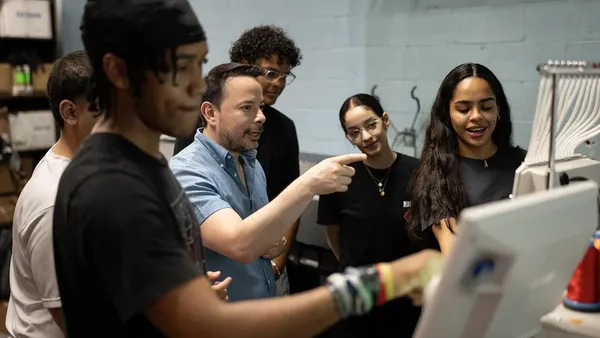Dive Brief:
- Educators hope students will be more than just “active viewers” when watching videos in class, Tanner Higgin, Common Sense Media's education editorial strategy director, wrote in eSchoolNews. They also want students who can take what they’ve viewed and apply that information to their schoolwork.
- Higgin wrote about strategies he thinks are helpful at engaging students. One way is backchanneling — done through methods such as Backchannel Chat — which allows students to take notes and discuss what they’re watching together. Another suggestion is to let pupils read and annotate transcripts of what they’re watching.
- Students can also watch a movie for a second time during class to reinforce and more deeply embed what they’ve seen. This gives children a chance to be passive viewers the first viewing while transitioning to more active viewers the second time around.
Dive Insight:
Gone are the days of popping a video into a VCR and watching students drift off into an afternoon slumber — today, videos are considered a solid way to engage students in classroom material. Common Sense Education has a number of helpful cheat sheets that walk teachers and administrators through how to best use videos with students. One suggestion is for teachers to pre-screen content and then decide if it’s best used as an instructional video or something that can help students dive more deeply into concepts.
There are also resources available that detail how to start using the backchanneling tool more effectively during screenings, and links to video apps and websites show students and educators how to make their own videos. Duplin County Schools in North Carolina, for example, has a one-pager posted online that describes how to select videos for a classroom and 10 ways to incorporate them into learning. All these ideas are likely to produce better outcomes than turning down the lights, popping in a dusty movie title and hoping students glean something from the class period.










